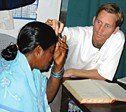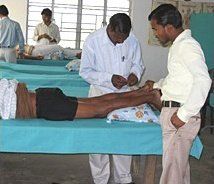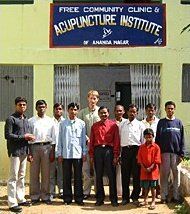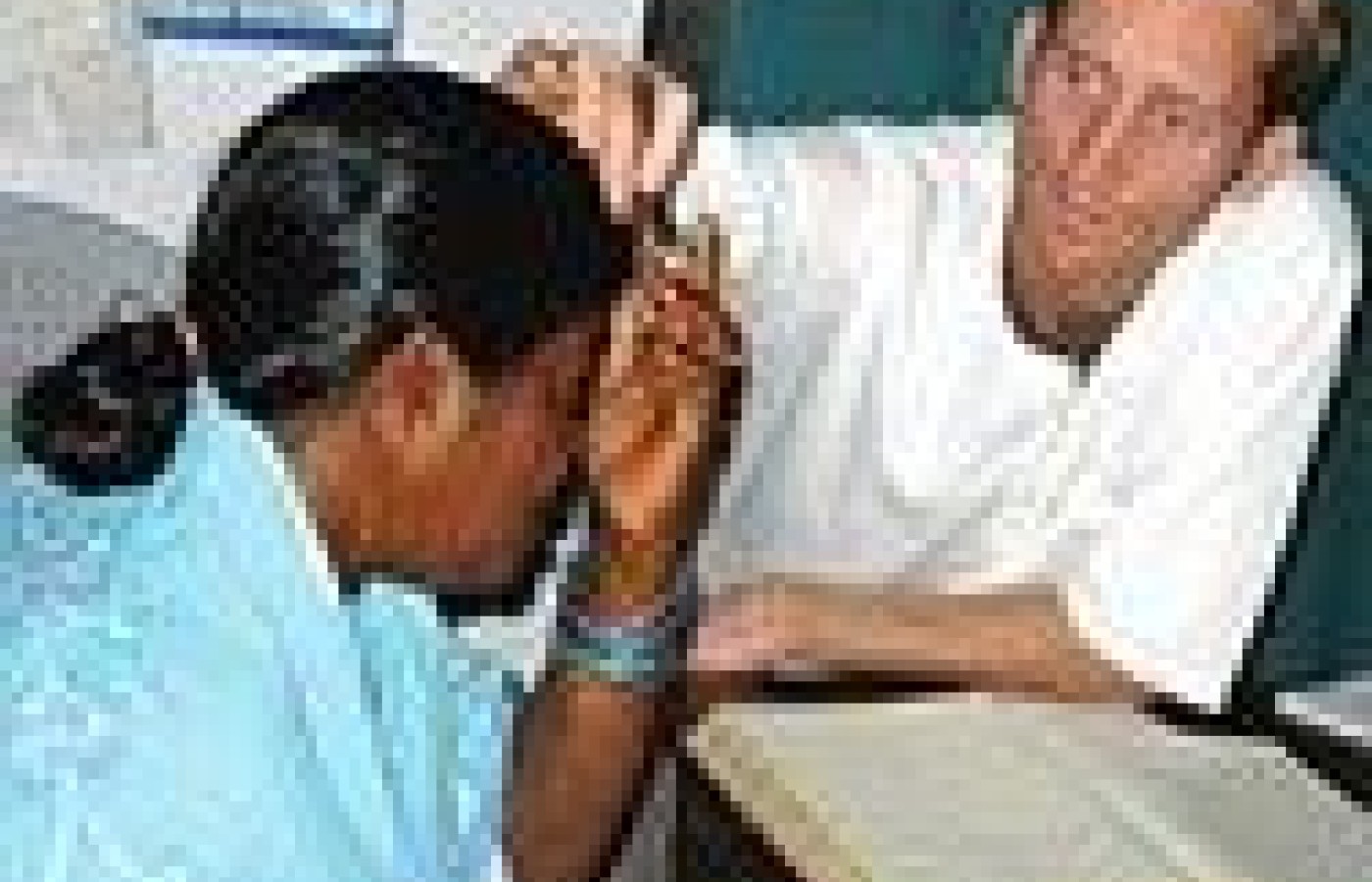People today want convenience, whether it be from their bank, credit card, favorite retail store, or restaurant. They demand it from the companies who hold their loyalty, including their health care providers (you). They don’t want to call and possibly be put on hold, and they want to use an app or schedule an appointment on your website. Here are three reasons your practice can gain by switching to online appointment scheduling.
Acupuncture in India
When one thinks of India, the word "acupuncture" doesn't exactly spring to mind. While living there for four months this past winter, however, I was quite moved to learn that acupuncture is becoming more widely practiced as the efficacy of the medicine gains recognition. The people of India are very practical. If they see that something works, they use it.

The village where I volunteered for two weeks last February is called Ananda Nagar. It is located in the state of West Bengal in northeast India. It is a community of both socially and spiritually dedicated people. Service is at the heart of all that goes on there, and that is what I went there to learn. Living in America, there is the tendency to get so absorbed in the daily grind of making a living and looking out for one's own interests that the aspect of serving others, which inspired many of us to get into medicine in the first place, gets lost or neglected. My time at Ananda Nagar was a vivid reminder of what it truly means to be in the service of others.
Ananda Nagar is in rural India, surrounded by farmland speckled with small villages. The people generally work long, hard hours, making barely enough to put food on the table for large families. Malnutrition is a serious issue. The conditions I witnessed are reminiscent of those in rural China during the time when Chinese medicine was being developed and used exclusively. Ananda Nagar is centered around a free hospital that is truly practicing integrative medicine. The acupuncture clinic where I worked sits right next to allopathic, homeopathic and ayurvedic clinics. There is also an acupuncture school that provides training for students and operates in conjunction with the clinic.

My first few days at the clinic were a bit overwhelming. It is a free clinic; no one is turned away. There are no appointments, so we would see between 20 and 50 walk-in patients between 9 a.m. and 1 p.m. six days a week. Compared to the 2-4 patients seen per day in the student clinic back at school in the U.S., this was quite a shift!
Each morning at the clinic, I sat opposite an Indian acupuncturist who translated for me. He would ask the patient in Bengali what the main complaint was, then translate as I asked further questions, felt the pulse, and looked at the tongue. I would then write up the diagnosis and treatment plan and choose the points, which would then be given to the students who would administer the treatment. If it was a slow day, I would supervise needle placement or demonstrate a certain needle technique, such as scalp acupuncture or threading. It was a bit strange to be in the role of supervisor coming right out of school, but I soon realized that the education I received was excellent, and I was happily surprised to find that I had more to offer than I would have thought. After the initial shock of being in the clinic, I found that my education served me well, and my confidence began to build.
In the afternoons, I took on the role of teacher. I was impressed with the level of dedication of both the students and the teachers at the school. Students do not take education for granted in India. They recognize the value that education plays in improving their lives. The students do not have the resources to buy their own books. The school has a small library of textbooks covering the foundations of acupuncture, though access is limited because these are the only copies. Therefore, photocopies of the original books are used by the students instead of the originals. A wider range of current TCM texts would be invaluable at Ananda Nagar.
In working at the clinic, I initially found that the most difficult thing to get used to was the condition of the patients' bodies relative to their age. I was taken aback by women coming in with heavily wrinkled skin and barely perceptible pulses complaining of pain throughout their entire body. At first, I would have guessed they were in their 50s, but then discovered they were typically only in their 20s or 30s!
These people work very hard, usually bent over in the fields, starting from a very young age. There was clear evidence of the kidney qi becoming depleted due to overwork. On top of this, there was a lack of supplementation of the prenatal kidney qi due to malnutrition. As one might expect, the life expectancy of people in this region of India is short.
An interesting and rewarding aspect of working in the clinic was witnessing the crystal-clear presentation of patterns of pathology. The Chinese medicine that I learned in school really came alive there. I found differentiation of signs and symptoms into patterns to be much clearer than in the U.S. I would go down the list of kidney vacuity signs and symptoms, and the patient would quite often answer the questions affirmatively. For instance, if the patient's main complaint was knee pain, I would ask the patient the following:
"Any low back pain?"
"Yes."
"Any ear ringing?"
"Yes."
"Night urination?"
"Yes."
And so on.
It was reassuring and quite beautiful to see the medicine we practice so accurately displayed in the clinical setting. This came as a contrast to the patients I have often seen in the U.S., who often present mixed, sometimes conflicting, symptoms of excess and deficiency. Again, I believe this is reflective of the similar conditions in rural India today and in rural China at the time this medicine was developing.
The acupuncture department at Ananda Nagar is 10 years old. It is a successful and well-run program. The evidence of this is in the high number of satisfied returning patients. As I mentioned earlier, Indians are very practical people. If something doesn't work, it is discarded. There is no time to waste in a place where subsistence living is the norm, so to see the patients' dedication to this relatively new form of medicine was heartwarming. It gave me great pride in the medicine we practice.
We treated solely with acupuncture and a little moxibustion. The needles used are all donated and therefore precious. If enough funding was available for herbs, along with a more amicable political relationship between India and China that would make importing herbs more viable, the results seen in the clinic would be even more dramatic. Given that the root cause of most patients' ailments was deficiency, it is easy to see that herbs would be a great help at Ananda Nagar. As it was, using just acupuncture, I witnessed some incredible cases of patients' conditions improving. When I say "condition," I'm not talking about a headache or an energetic tune-up. This is front-line acupuncture.

During my two weeks at Ananda Nagar, I witnessed two different cases of young children who had never walked before receiving acupuncture, and were able to take their first steps as a result. I saw a man with severe hemiplegia who could barely speak improve dramatically in two weeks. I also saw cases of elephantiasis and severe deformities of the limbs that were beyond any help acupuncture could offer. Overall, it was evident how beneficial acupuncture can be, especially when it is administered daily or every other day. I witnessed first-hand a cumulative inertia in successive treatments that is not present when we only treat someone once a week.
It was wonderful to see this medicine that I love shine so brightly in these people's lives half way around the world. During my time at Ananda Nagar I gained a level of confidence, both in myself as a practitioner and in the medicine itself. A major part of this was due to the volume of patients I saw. In the course of two weeks, I saw roughly 300 people and felt 300 pulses!
Experience is indeed the greatest teacher. I found that the most challenging aspect, as well as the greatest gift, was the experience of simply being with people. In some of the cases I saw, it was evident that the primary causes of the ailments from which they were suffering were lifestyle and diet. Unfortunately, these are two things they have little hope of changing due to the living conditions there. Even though this was sometimes the case, it was a huge lesson for me to learn how to just be with someone and listen. I would highly recommend this experience to any acupuncturist, whether you are a seasoned practitioner or are fresh out of school. You can't imagine how much you have to offer until you experience a place like Ananda Nagar.



